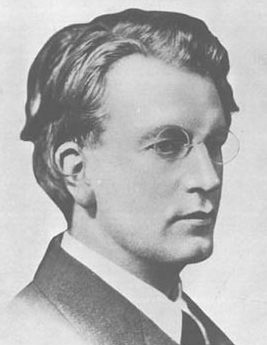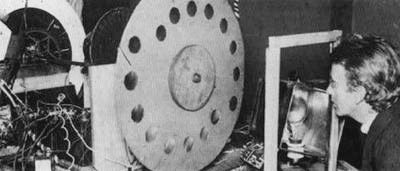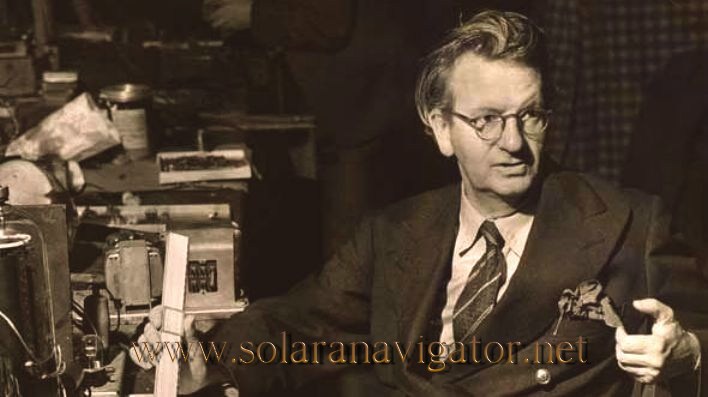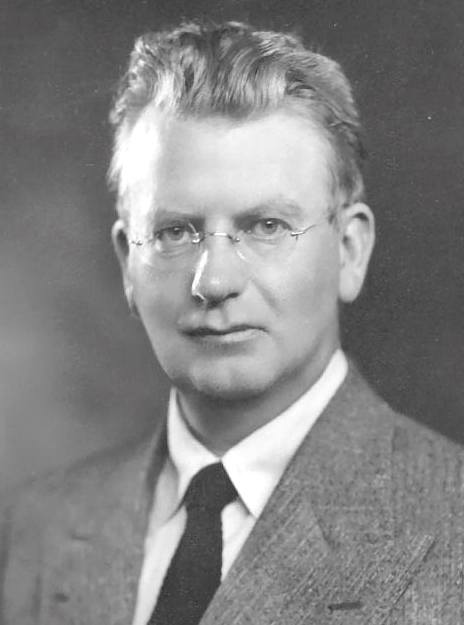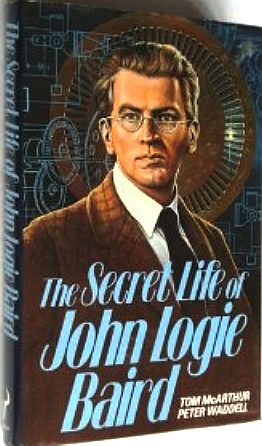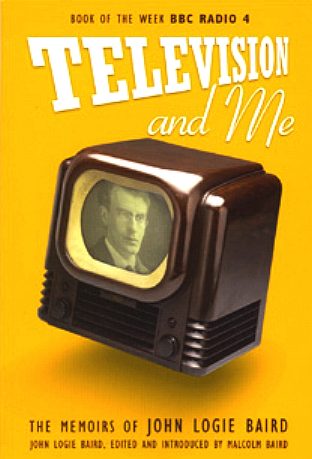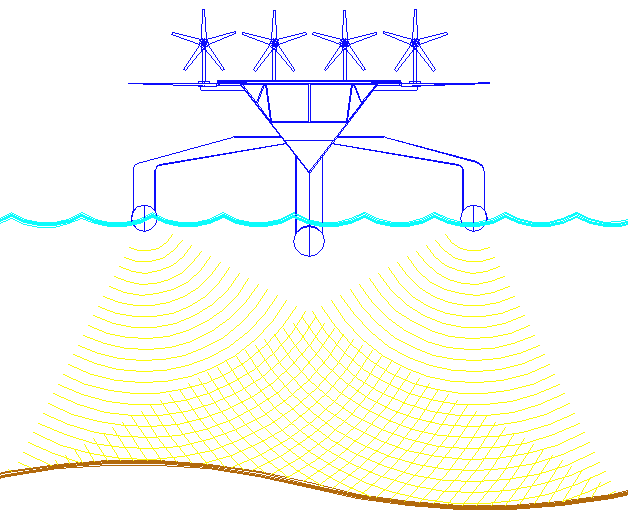|
JOHN LOGIE BAIRD 1988-1946
|
|||||||||||||||||
|
John
Logie Baird (August 13, 1888
– June 14, 1946) was a Scottish engineer, who is best known as the
inventor of the first working television system. If he were alive today,
he'd be amazed at the progress of television, with LCD and plasma slim
screens doing away with the vacuum tube and copper coils. We think that
he'd be pleased to see such progress. Baird was born in Helensburgh, Scotland, the son of a clergyman. Despite suffering from
health problems, he showed signs of
brilliance quite early in life, with some novel ideas. Baird was born in Helensburgh, Argyll, Scotland, the son of a clergyman. He was educated at Larchfield School (now part of Lomond School), Helensburgh; the Glasgow and West of Scotland Technical College (which later became the University of Strathclyde); and the University of Glasgow. His degree course was interrupted by World War I and he never graduated. Being rejected by the forces as unfit, he started serving as superintendent engineer of the Clyde Valley Electrical Power Company.
John Logie Baird
Television experiments
In his first attempts to invent television, Baird experimented with the Nipkow disk and demonstrated that a semi-mechanical analogue television system was possible with the transmission of a static image of a ventriloquist's dummy in London in February 1924. This early system was highly primitive—images were difficult to view and transmitted only in shades of brown. On October 30, 1925 the first moving image was transmitted—the now famous grainy image of a ventriloquists dummy's head. Baird later transmitted the image of a local boy he had paid to take part in his experiments to a crowd of onlookers. Although the development of television was the result of work by many inventors (including Baird, Paul Gottlieb Nipkow and Boris Rosing; see Television: History), Baird is one of its foremost pioneers. He is generally credited with being the first person to produce a discernible television image, and went on to produce other advances in the field. Hastings, in East Sussex, UK, claims to be the 'Birthplace of Television' as it was there he was living for health reasons when he did much of his research work into his televisor. Hastings would claim to be the place where electro-mechanical television was first actually perfected and demonstrated.
From December 1944 until his death in 1946, Baird lived at a house in Station Road, Bexhill On Sea - immediately north of the Station itself. Currently named "Baird Court" Rother District Council gave permission for this property to be demolished and the land used for a modern block of flats in 2006, despite the efforts of many local residents who believed that this property should be listed and preserved due to its historical importance.
John Logie Baird with his "televisor", circa 1925
First public demonstration
The first public demonstration of moving silhouette images was in the Selfridges department store in London in 1925. The first true television system (with gradations of light and shade) was demonstrated to the Royal Institution and a reporter from The Times on January 26, 1926 in the Soho district of London (at 22 Frith Street).
On October 30, 1925, John Logie Baird had been successful in transmitting his first true television picture in the laboratory: the head of a ventriloquist's dummy. Looking for publicity he visited the Daily Express newspaper to promote his invention. The news editor was terrified. Later he was quoted by one of his staff as saying:" For God's sake, go down to reception and get rid of a lunatic who's down there. He says he's got a machine for seeing by wireless! Watch him-- he may have a razor on him." [1]
Broadcasting
In 1927 Baird transmitted a long-distance television signal over 438 miles of telephone line between London and Glasgow. He then set up the Baird Television Development Company Ltd, which in 1928 made the first transatlantic television transmission from London to Hartsdale, New York and also made the first television programme for the BBC. He televised the first live transmission of the Epsom Derby in 1931.
From 1929-1935, the BBC broadcast television programs using the 30-line Baird system. In late 1936 the BBC began alternating Baird 240-line intermediate film transmissions with EMI-Marconi's electronic scanning system which had recently been improved to 405-lines. The BBC ceased broadcasts with the Baird system in early 1937.
Though John Logie Baird is often given credit for 'inventing' television, Baird himself never claimed this, as his early experiments were all with mechanical systems. High definition electronic television as we know it was not invented by any one person, but through the efforts of many.
However, the research and development team at EMI in Hayes, assembled in by Isaac Shoenberg in 1932, was undoubtedly the first to produce a viable system. This was proved later when, following a series of test transmissions at Alexandra Palace from November 1936 to February 1937, the EMI 405-line system was chosen by the BBC for the worlds first regular television service.
Alan Blumlein, as head of this team, was therefore the key figure in the development of the electronic high definition television system.
Baird's television systems were therefore replaced by an electronic television system developed by EMI-Marconi under Isaac Shoenberg, similar to the system described by A.A. Campbell-Swinton, improved by Kalman Tihanyi in 1926, and initially developed by Vladimir Zworykin. Philo T. Farnsworth's Image Dissector camera was available to Baird, however it was found to be lacking in light sensitivity.
John Logie Baird
Other inventions
Baird's numerous other developments demonstrate his particular talent at invention. He developed, in 1928, a primitive video recording device, which he dubbed Phonovision. The system consisted of a Phonodisc, which was a 78rpm record that could play a 30 line video signal. His other developments were in fibre-optics, radio direction finding, infrared night viewing and radar. There still remain, however, questions about his exact contributions to the development of radar, for his wartime defense projects have never been officially acknowledged by the British government. According to Malcolm Baird, his son, what is known is that in 1926 Baird filed a patent for a device that formed images from reflected radio waves, a device remarkably similar to radar, and that he was in correspondence with the British government at the time. Much of the information regarding Baird's work in this area is just beginning to emerge.
Baird made many other contributions to the field of television before and after his mechanical system fell into disfavor. In 1928 he demonstrated the first colour television and true stereoscopic television. In 1932 he was the first to demonstrate ultra-short wave transmission. In 1941 he demonstrated a 600 line HDTV colour system, and during 1944 he tried to persuade British authorities to adopt his 1000+ line Telechrome electronic colour system as the new post-war broadcast standard. He also demonstrated a big screen television system at the London Coliseum, Berlin, Paris and Stockholm.
WAR, HEALTH & THE SOUTH OF ENGLAND
Baird
came to Hastings, Sussex in the spring of 1923 after suffering a health
breakdown. The south coast of England was then considered to have
restorative powers, a view which shared by Baird of the sea air, having
staged an earlier recovery with the help of the sea. The Baird family rented a house at 1 Station Road, across the road from the
train station and London trains. A new company called John Logie Baird Ltd. had been formed to promote his recent inventions which included the
"Telechrome", the world's first cathode ray tube for colour television.
The inventor carried on doing research on television at his own expense, while his wife and two children Malcolm (born 1935) and Diana (born 1932) moved to the remoteness and relative safety of North Cornwall.
With the end of the war in sight in 1944, their house at Sydenham had become uninhabitable due to bomb damage. For this reason the family moved to Bexhill in January 1945.
DEATH
Baird died in Bexhill-on-Sea, Sussex, England in 1946 after suffering a stroke in February of that year. He'd spent the last 18 months of his short and eventful life in Bexhill, where he died on June 14th at the age of 57.
VISION FOR THE FUTURE
In 1944, the end of World War II was in sight. A British government committee, under the chairmanship of Lord Hankey, was set up to consider the future of television broadcasting and the television industry after the end of the war.
Among the many witnesses from the BBC and industry was one private citizen, John Logie Baird. His contribution was given in 6 parts: PART FOUR (4.)
Part
4 of the above 6, reveals Baird’s ideas for the long-term technical future of television,
reproduced below in part. It is most interesting to compare his
predictions as to the development of television, with that having taken
place. For example plasma and LCD developments, to name but a few.
4. New television service of radically improved type
LINKS:
INVENTORS A - Z
Invest today for a better world tomorrow
John Logie Baird would have approved of this advanced oceanographic survey robot
|
|||||||||||||||||
|
This website is Copyright © 1999 & 2013 Max Energy Limited, an educational charity working for world peace. The bird logos and names Solar Navigator™ and Utopia Tristar™ are trademarks. All rights reserved. All other trademarks are hereby acknowledged.
|
|||||||||||||||||
|
AUTOMOTIVE | BLUEPLANET | ELECTRIC CARS | ELECTRIC CYCLES | SOLAR CARS | SOLARNAVIGATOR | UTOPIA |
